Mackinac Island is one of the most popular travel destinations in the Midwest of the USA. The small island in the Straits of Mackinac offers a wealth of historical, architectural and, for those with a sweet tooth, even culinary attractions in just under 10 square kilometers. A day trip is hardly enough to explore everything properly. A trip to Mackinac Island is like a journey through time, merging the present and the past. This timeride works particularly well in the off-season, because the fewer contemporaries, the more intense the feeling of time travel.
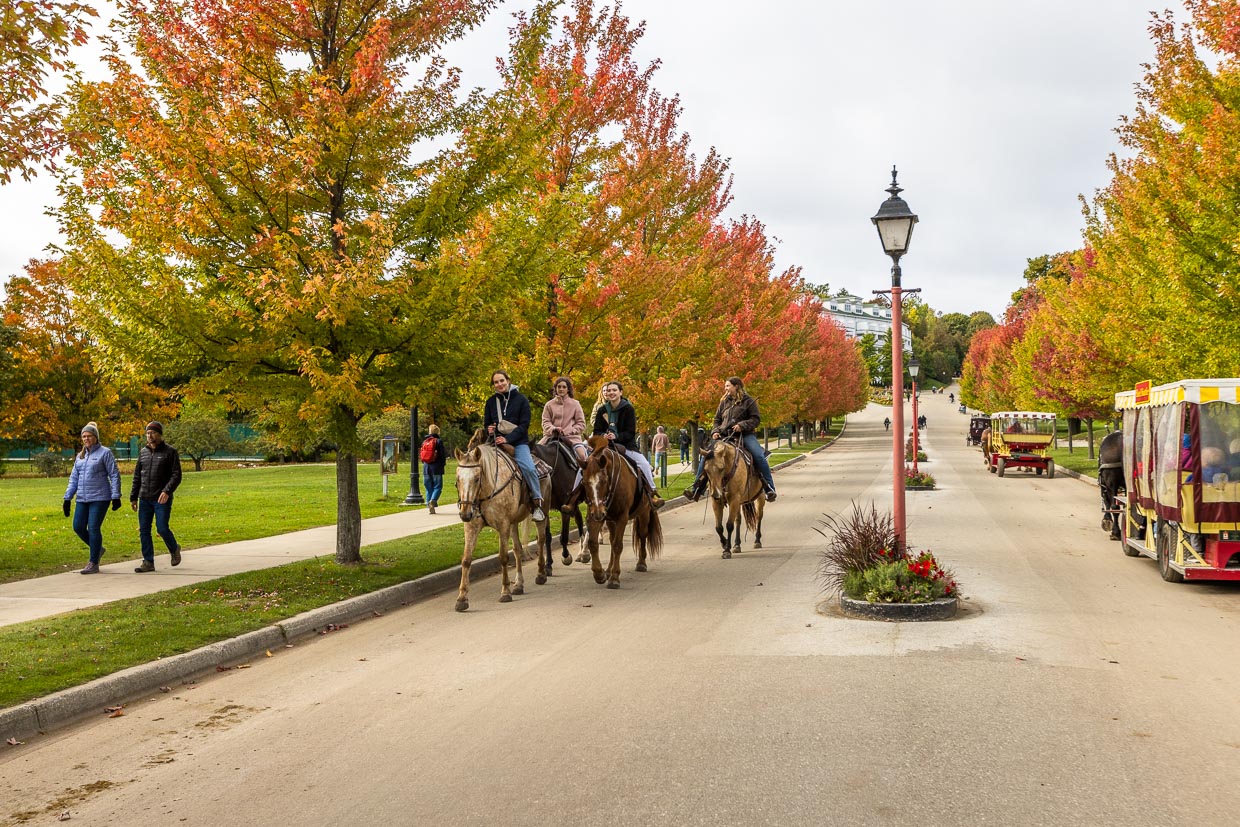
Ride into the past
The journey into the past begins with a ride in a speedboat. The Shepler’s Island Ferry whizzes across Lake Huron in just 15 minutes. As soon as you arrive on Mackinac Island, you immediately feel the decelerated atmosphere. The clatter of horses’ hooves sets the pace here. Mackinac Island is a car-free island and has been since the invention of the automobile. On our round trip through Michigan, we first stopped off in the city of Detroit. Henry Ford, the Model T and assembly line production are therefore still very much present. And now we come to a place that has successfully resisted horseless carriages for 125 years. It’s a place you wouldn’t expect to find in the USA. Which is precisely why Mackinac Island should not be missing from any itinerary through Michigan.
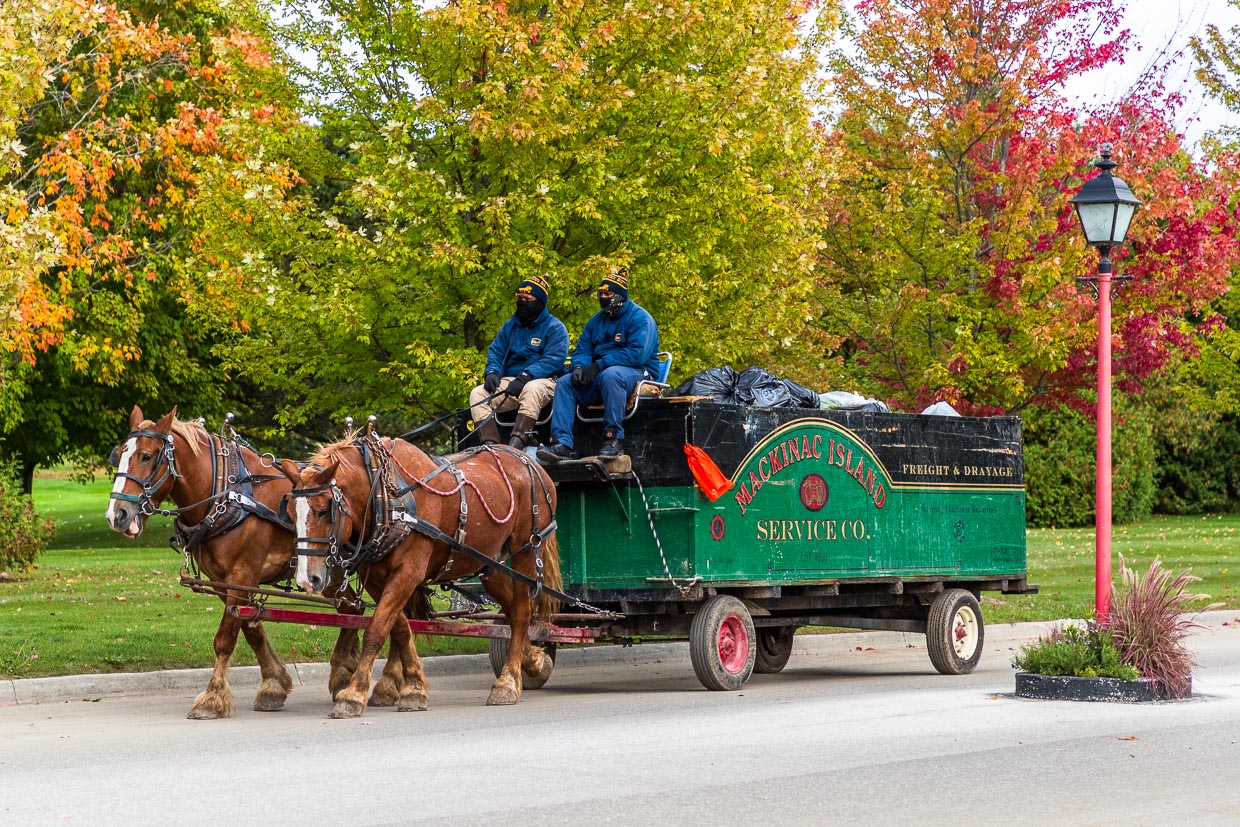
On the road with two horsepower
In July 1898, the Mackinac Island Town Council passed a resolution prohibiting the driving of horseless carriages within the boundaries of the village of Mackinac. This automobile ban was enacted in the same year that Henry Ford quit his job with Thomas Alva Edison 500 kilometers away in Detroit and founded the Detroit Automotive Company. A company that had to file for bankruptcy after a short time. It was not until 1913 that the famous Ford Model T rolled off the assembly line. The groundbreaking decision by the islanders was above all lobbying for the carriage companies. A year earlier, in 1887, the noble Grand Hotel had opened on the island. It was built in record time and still impresses today with its white wooden veranda. Back then, it was a matter of course to take a carriage to the hotel. The consistent rejection of automobility proved to be a stroke of luck for the small island. Mackinac Island is still one of the most popular travel destinations in the Midwest of the USA.
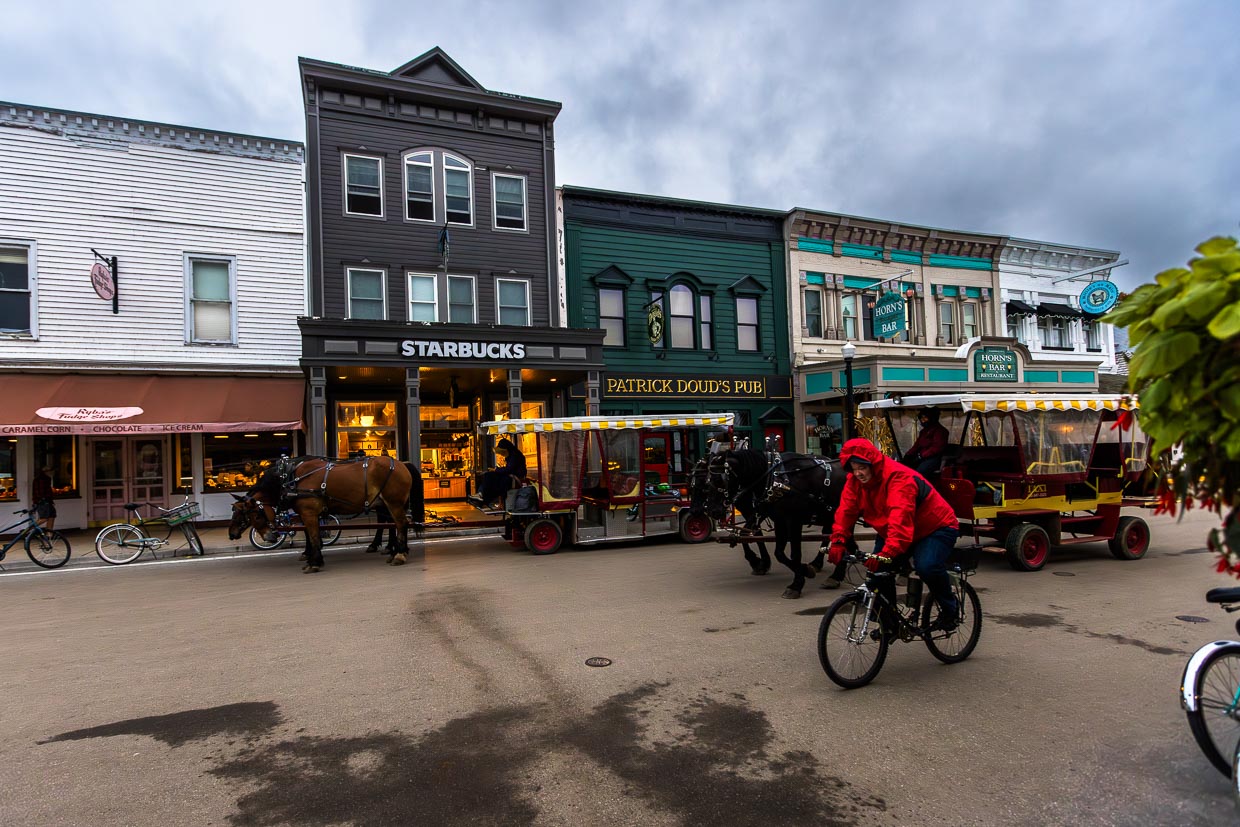
The Grand Hotel – a touch of Good Old Europe
The Grand Hotel was declared a National Historic Landmark in 1989. The 200-meter-long veranda made of pine wood is considered the longest veranda in the world. From here, guests have a view of the gardens and Lake Huron. Even the famous Mackinac Bridge, which connects Michigan’s lower and upper peninsulas, can be seen from here. In its early days, the Grand Hotel delighted wealthy families from Detroit and Chicago. Many US presidents and guests of state have stayed here. The Victorian architectural style, the sensationally long veranda, magnificent function rooms, individually furnished rooms and several restaurants exuded the elegance and cosmopolitanism of European grand hotels.
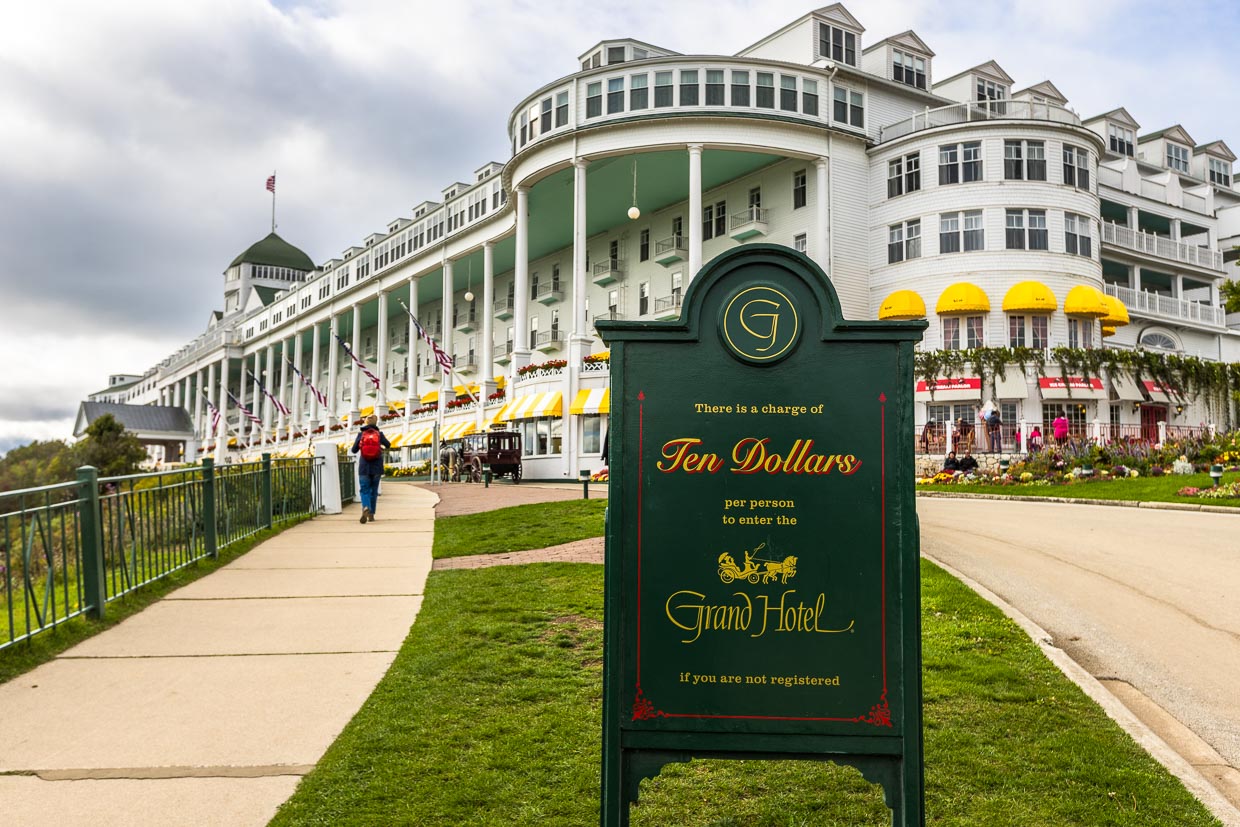
However, the Victorian charm of the hotel has been somewhat exaggerated over time. From the Parlor to the Cupola Bar, the venerable building looks like a lady with a little too much make-up, trying to distract from her age. Afternoon tea or a grand lunch can also be booked by guests who are not staying at the Grand Hotel. From the Cupola Bar on the fifth floor, you have a great view of the Straits of Mackinac. The red elevators take day guests up to the cupola. Admission for a self-guided tour of the hotel costs ten dollars.
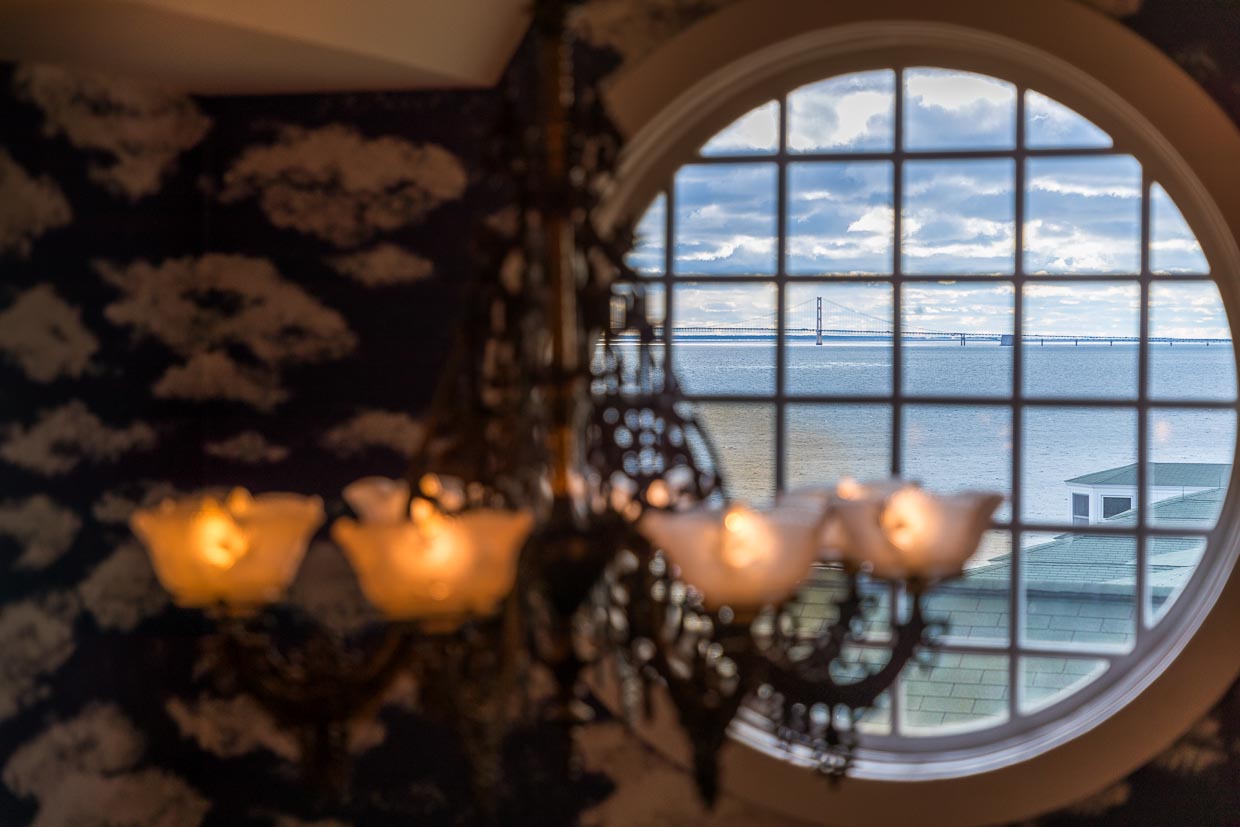
Klipp-Klapp: the sound of the island
The oldest and still most popular tourist attraction on Mackinac Island is a ride in a horse-drawn carriage. The coachmen are also tour guides and tell entertaining stories about the island. They tell of the Native Americans who used the island as a burial ground, of the French who built a hub for the fur trade here, of the English who drove out the French and built the fort. The ban on cars, working with horses, the quiet winters and current island politics are also discussed during the carriage ride. Always skeptical of new means of transportation, e-bikes were also banned in 2023. The charm of the island with the sound of horses’ hooves should be preserved. On Mackinac Island, everything is transported by horse-drawn carriage, from garbage collection to drinks deliveries. Several providers of horse-drawn carriage rides can be found with their carriages on Market Street. September marks the end of the season on the island and many restaurants and stores close. Most of the horses also leave the island and recover from the summer season in stables on the mainland.
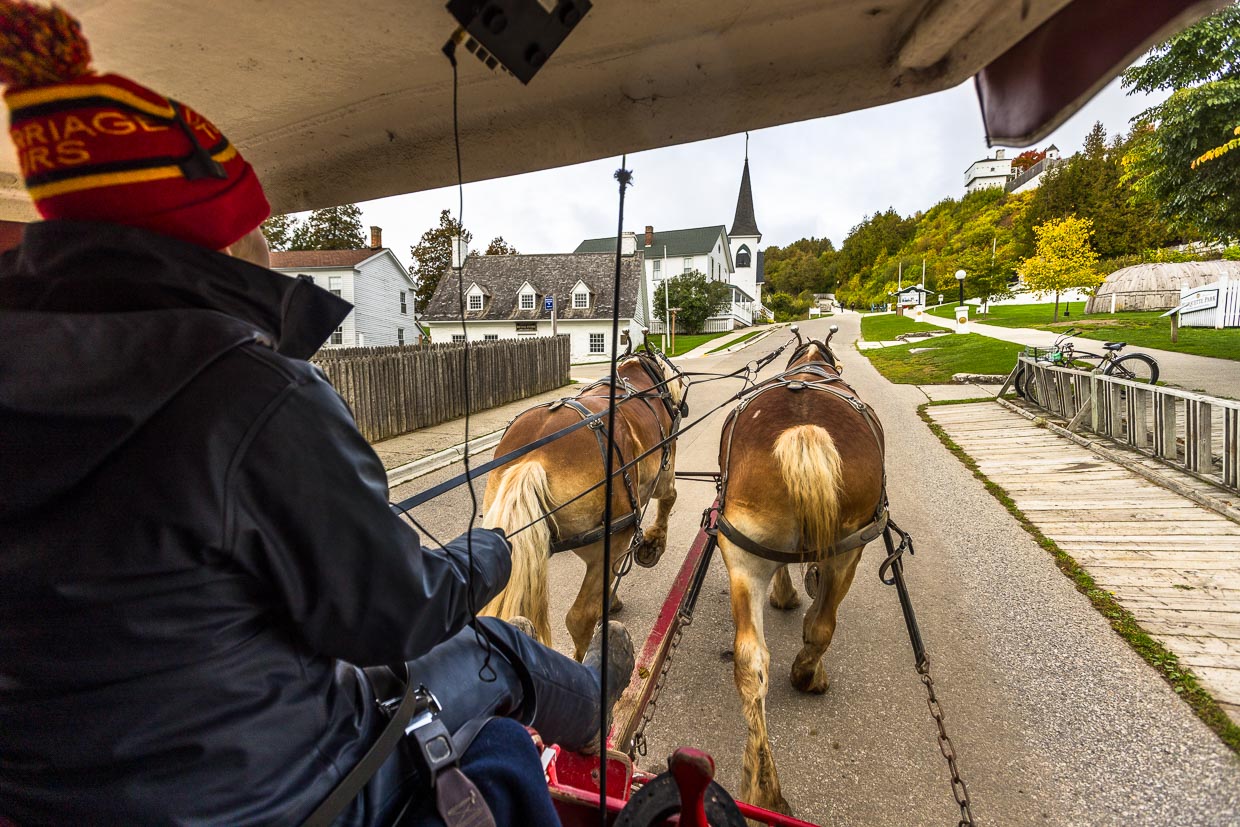
Fort Mackinac
Fort Mackinac is another place on the island that offers a wonderful view of Haldimand Bay and Lake Huron. In addition to the view, the history surrounding the fort attracts visitors. The British were also impressed by the high cliffs in 1780 and chose the island as a strategic location for a military base. Command of the fort changed hands several times between the British and the Americans. The fort remained in operation until 1895.
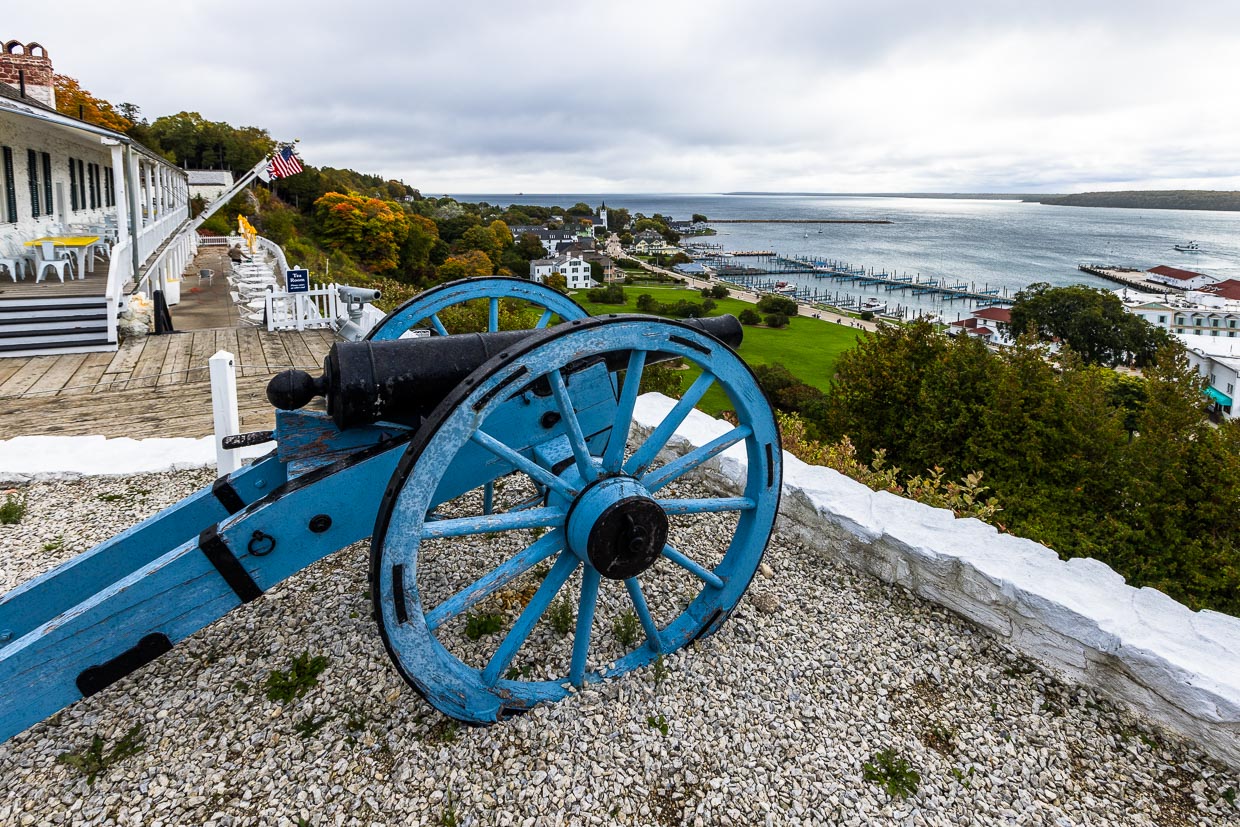
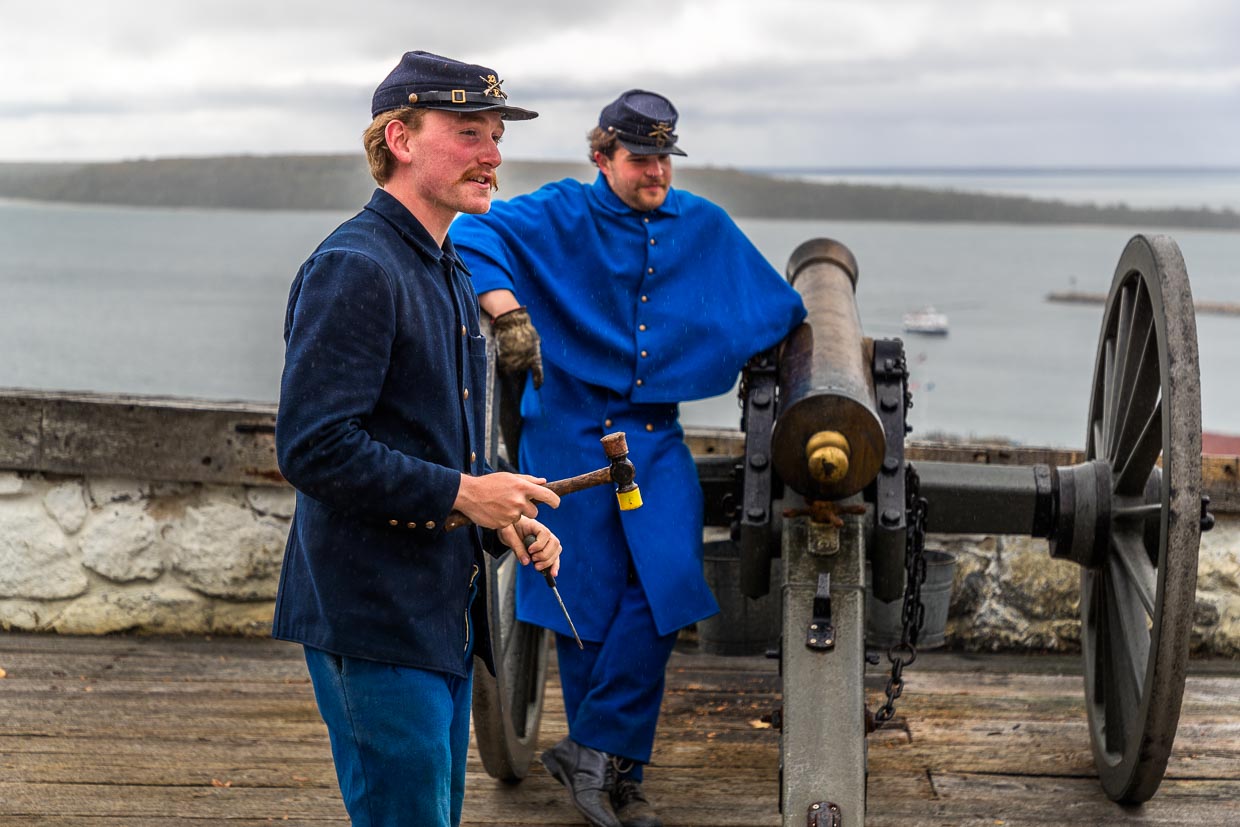
Other island pleasures
The leisure activities on Mackinac Island are varied. It is home to the only car-free highway in the USA, the M185. The 13-kilometer road has hardly any inclines, but many beautiful viewpoints from Voyageur’s Bay to British Landing, from Pontiac’s Lookout to Gitchee Manitou. A loop around the island is a journey through history. Since 2016, there has been a Native American Cultural History Trail along the highway, which provides information about the culture of the indigenous people at six locations. Like any vacation island, Mackinac Island offers water sports activities such as island tours, charter boat rentals, kayak tours, sunset and sunrise boat trips. Of course, you can also play golf and go horseback riding on Mackinac Island.
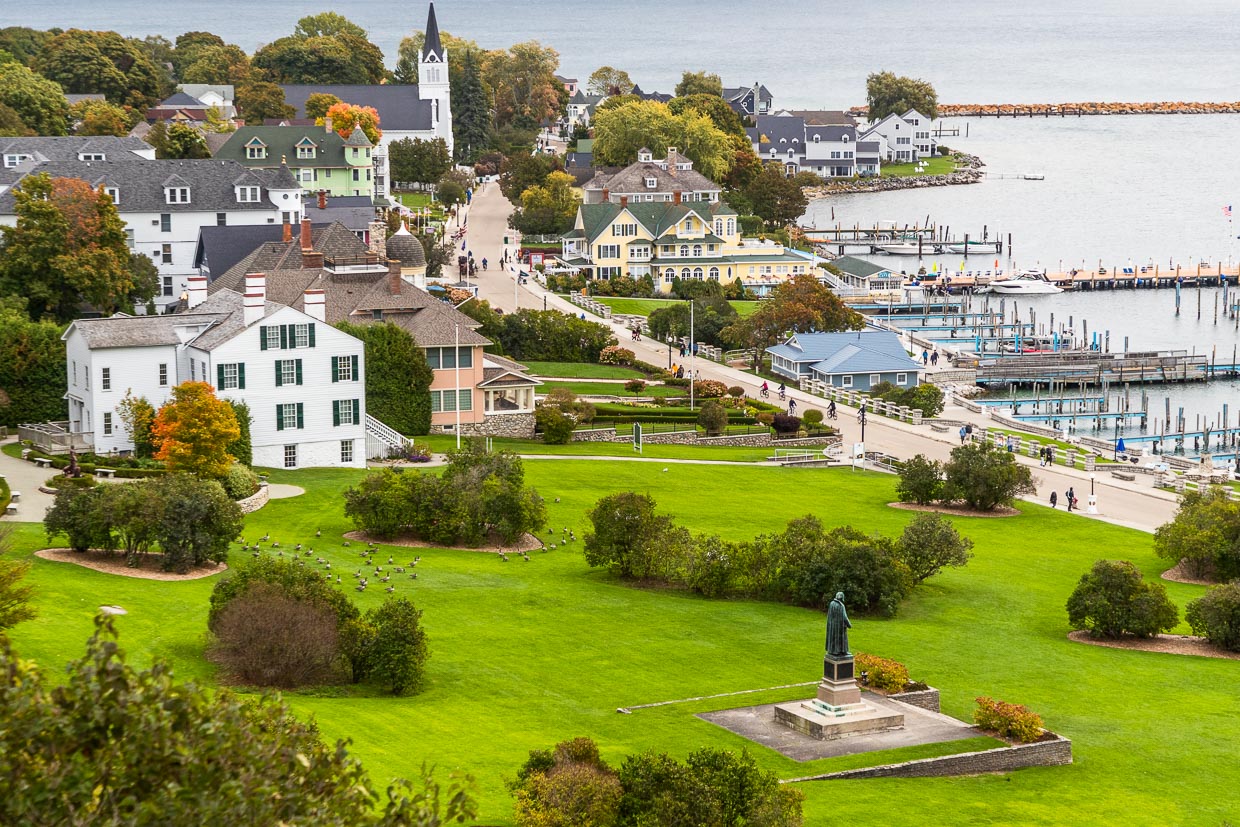
Murdick’s Fudge and the Fudgies
Long before pop star Taylor Swift’s fans were nicknamed Swifties, Mackinac Island called the people lining up outside the fudge stores in summer the Fudgies. Mackinac Island Fudge lays claim to being Michigan’s most famous food. During the season, over 4,000 kilograms of fudge are handmade every day by seven fudge producers. According to legend, the recipe for the soft caramel made from sugar, butter and milk was invented in Baltimore. However, Sara Murdick brought the recipe with her to the island when she arrived in 1887. Her son Rome Murdick turned fudge production into a show by making fudge on marble slabs. The art of fudge making soon became a competition, with customers watching as Rome and his competitors balanced and skillfully shaped the cooling fudge on the marble slabs.
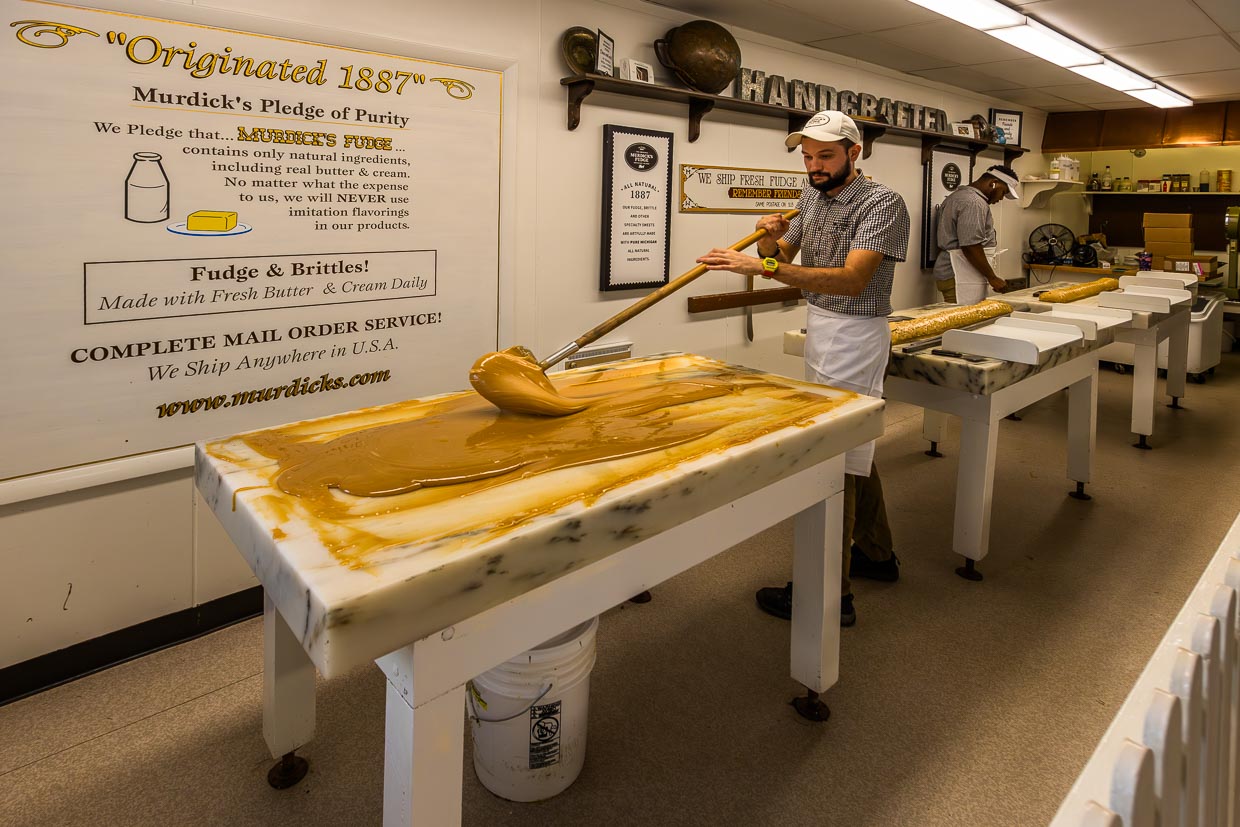
Doud’s Market since 1884
No one can avoid the island’s fudge stores. There are seven manufacturers and even more outlets on the island. Doud ‘s Market deserves a special mention. The store on the corner of Fort Street and Main is considered America’s oldest grocery store. Since 1884, the store has been supplying islanders and tourists year-round with everyday necessities, from fresh sandwiches to fishing hooks. The store looks charmingly out of time, with wooden shelves and handwritten signs. Amish people also shop here. Many families from this religious minority visit or work as craftsmen on Mackinac Island. After all, hardly anyone else can still repair horse-drawn carriages. There is no better proof that time travel is possible on Mackinac Island.
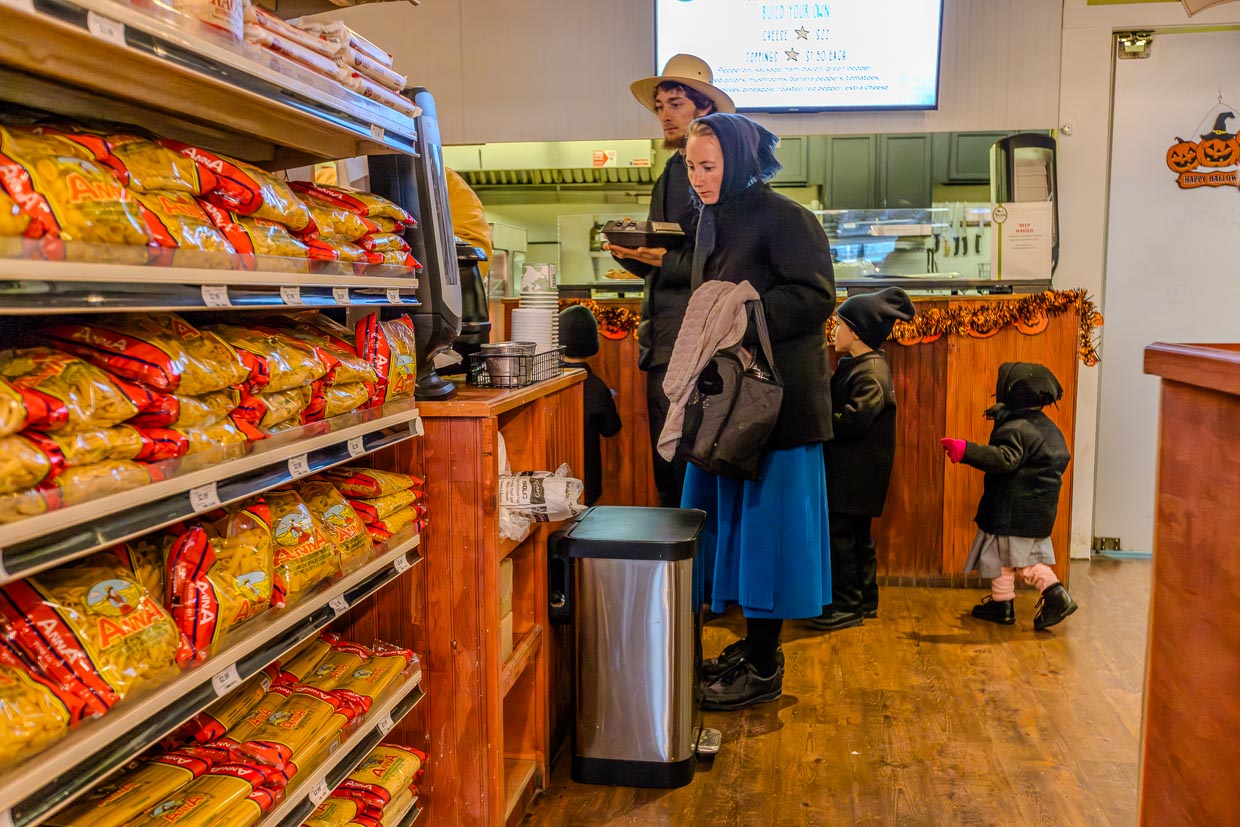
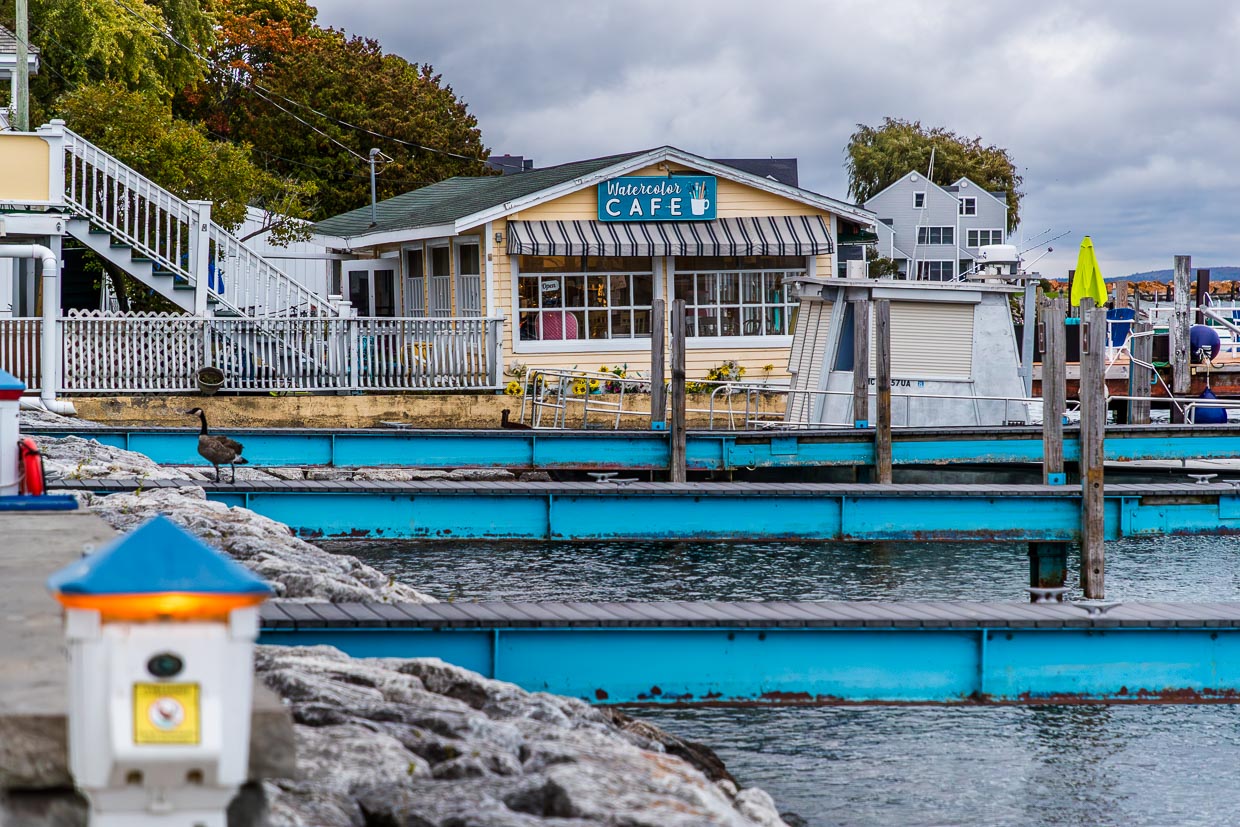
Arriving by ferry
Traveling by Shepler’s Ferry is quick and convenient. Overnight guests drop off their luggage at the ferry terminal before they even park their car. The suitcases are given a luggage tag with the name of the hotel on it. The car can then be parked in the long-term parking lot. A speedboat takes just 15 minutes to reach the island. The service staff bring the luggage to the hotel. This means you can start exploring the island as soon as you arrive. A nice hotel on the main road is the Lake View Hotel. Millie’s on Main serves local beers, white fish from the Great Lakes and tasty burgers.
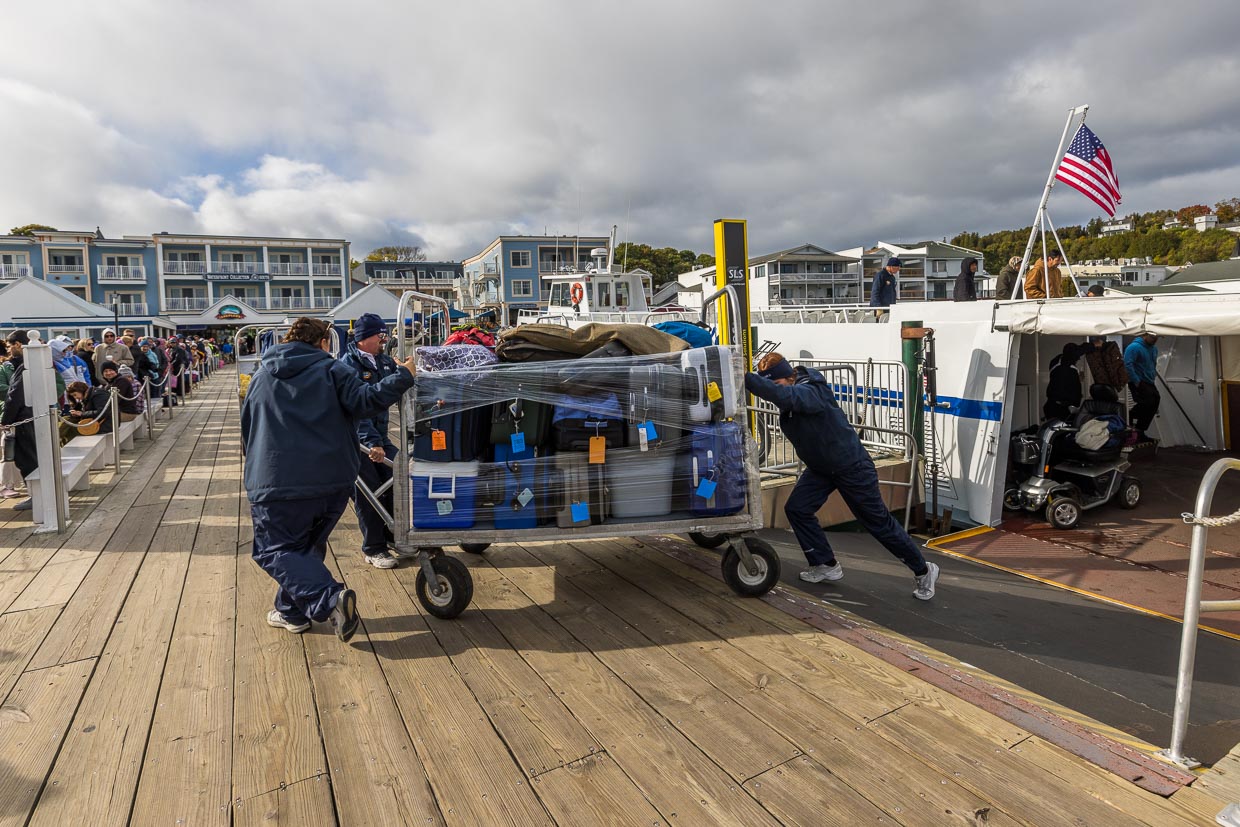
Our journey through Michigan starts in the capital Detroit with classics and new attractions of a city in transition. The huge Michigan Central station, once a ruined line, celebrated its comeback as a research location for mobility in 2023. However, the options for getting around Detroit have long been extremely diverse, as mobility in Motown works pretty well even without a car. The journey continues to Traverse City on Lake Michigan with the Sleeping Bear Dunes National Park. Mission Point Lighthouse is one of these lighthouses with a history. Why the lighthouse in Grand Traverse County is particularly popular with women is explained in the story about Sarah Lane and the keeper program. We continue on to Charlevoix. The town has a maritime flair and lots of stones. There are Petoskey stones on the beach and Earl Young’s famous stone houses in the town. USA without cars? A fact on Mackinac Island. The success story of Michigan’s heavy industry began with a defeat.
The research was supported by Mackinac Island Tourism and Pure Michigan

